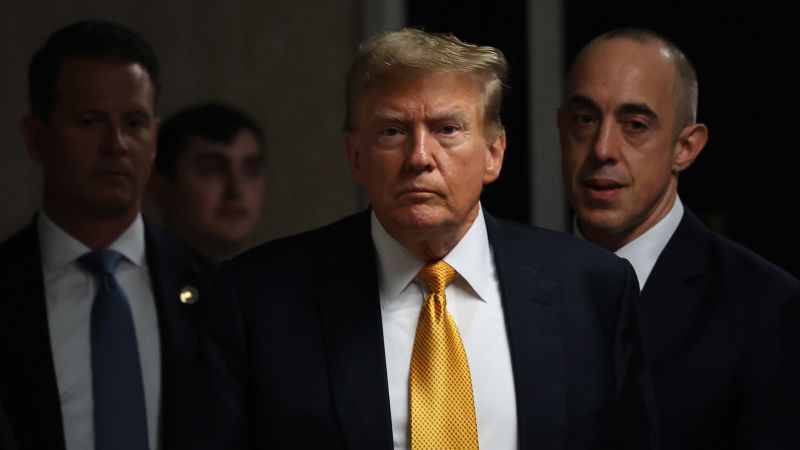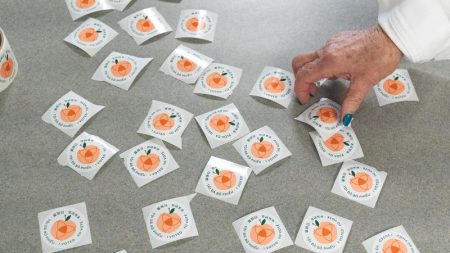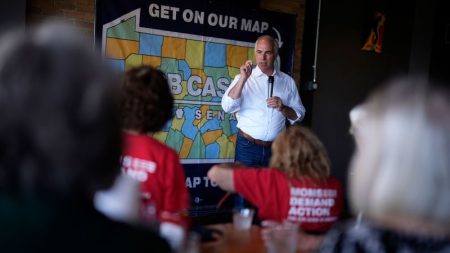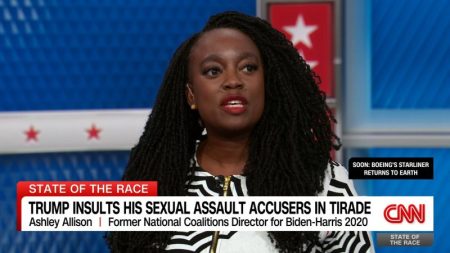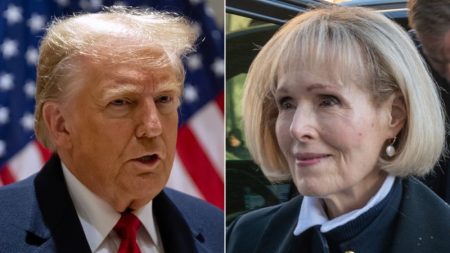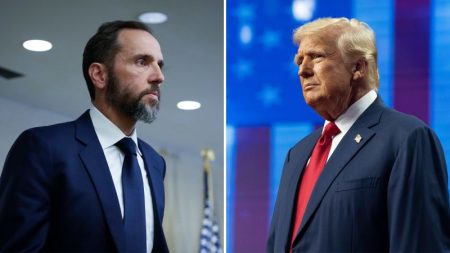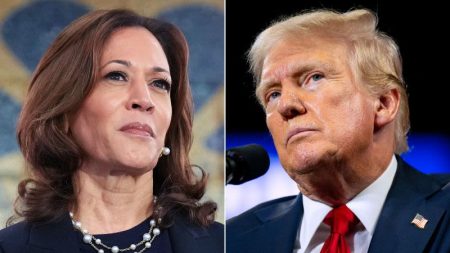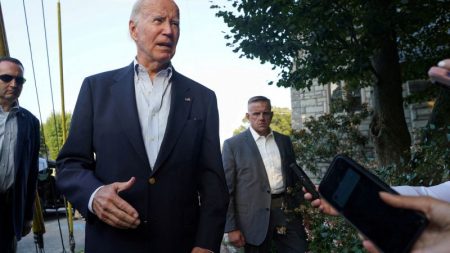It was a tawdry tale of lies, revenge and hush money, with a sordid alleged bedroom scene, a judge whose patience finally cracked and a raging defendant who is a once and possibly future president.
But there’ll be no more evidence, witnesses, or brutal cross-examinations in Donald Trump’s first criminal trial, which has moved into the final phase before jurors retire to deliberate their verdict in a historic case entangled with the 2024 election.
Unusually, there will now be a break of a week — because of the Memorial Day holiday — between Tuesday’s final testimony and when lawyers for each side lay out their final narratives in closing summations. Then the judge will deliver his instructions — a critical stage of the case in which the jury will learn how to apply the law and to weigh conflicting testimony and different kinds of evidence.
That’s when seven men and five women from New York will have to decide whether Trump will be the first ex-president convicted of a crime and the first presumptive nominee running as a convicted felon.
The former president has been preparing for the moment for weeks. He’s mounted a daily campaign to destroy the reputation of the court and Judge Juan Merchan, as well as Manhattan District Attorney Alvin Bragg, a Democrat, who brought the case. “The judge hates Donald Trump, just take a look, take a look at him, take a look at where he comes from. He can’t stand Donald Trump,” the former president said on Tuesday in the latest of his daily media rants in the corridor. At one point, the judge threatened to send him to jail if he continued to violate a gag order protecting key witnesses – establishing a red line that the ex-president is yet to cross.
Trump’s bizarre practice of reading aloud critiques of the case from his allies in conservative media was all designed to create an atmosphere of grievance around the trial, which he’s leveraged to bolster the core rationale of his White House campaign — that he’s a persecuted victim of weaponized justice.
As the weeks went on, Trump was joined at the court by a cadre of Republican lawmakers, exemplifying his total control over the GOP after winning his third consecutive nomination and its continued genuflection toward a leader who tried to destroy American democracy to stay in power after the 2020 election.
It’s still early to say if the case in which he’s pleaded not guilty — and the eventual verdict — will have any influence on voters this fall. But there is little sense the trial, from which television cameras are barred, has captured the imagination of the nation.
It’s impossible to know how jurors are interpreting the daily drama of the courtroom in any trial.
But there’s a lot to sort out in a case that has grave implications for Trump’s future, and even his liberty, and comes with huge political overtones as potentially the only one of his four criminal trials to be completed before the election.
In a month of dramatic testimony, the prosecution alleged that Trump illegally falsified business records to cover up a $130,000 hush money payment to adult film star Stormy Daniels to deceive voters in 2016 in an example of election interference. Trump has denied the alleged affair with Daniels, and hush money payments are not illegal in themselves. But the jury must work through a complex legal equation at the heart of the case. To reach a guilty verdict, they must agree that New York State prosecutors have proven beyond a reasonable doubt that Trump falsified business records — which is normally a misdemeanor in the state. Then, to convict Trump of a felony, the jury must determine that this was done to commit another crime — in relation to the election. “The defendant Donald Trump orchestrated a criminal scheme to corrupt the 2016 presidential election,” prosecutor Matthew Colangelo told jurors in his opening statement in April.
The defense, however, contends that Trump is innocent of any crime. His lawyers have sought to cast doubt on the paper trail established by prosecutors by saying Trump had nothing to do with falsifying financial records and they’ve tried to obliterate the credibility of the prosecution’s star witness, Michael Cohen. The ex-president’s self-described former “thug” is critical to the case because he provided the only direct implication of Trump in an alleged scheme to break the law with the cover up of the payment. And the defense tried to establish that Trump did not try to suppress details of his alleged affair with Daniels as part of a scheme to mislead voters. Rather, they argued, he was worried that it would upset his family.
And in his opening statement, Trump lawyer Todd Blanche told jurors: “I have a spoiler alert. There’s nothing wrong with trying to influence an election: It’s called democracy.”
Cohen’s testimony will likely be a critical element of the deliberations — especially whether the damage done to his trustworthiness during a searing cross-examination is enough to convince one or more jurors they cannot convict Trump based on his former fixer’s word.
Prosecutors knew that they had a problem with Cohen heading into the trial since he had already gone to jail after being found guilty over offenses related to the hush money payment and other crimes, including lying to Congress. They therefore sought to buttress his testimony before he took the stand with days of evidence. They called David Pecker, the former head of American Media Inc., which published the National Enquirer. Pecker was not directly involved in the hush money payment at the center of the case. But he was used to establish that Cohen and Trump had a record of using payments to squash unflattering stories about the future president before the 2016 election.
Former White House communications director and long-time Trump aide Hope Hicks was also called by the prosecution and appeared to put her former boss in a heap of trouble when she said that his campaign was transfixed with worry over the release of an “Access Hollywood” tape that showed him boasting that he could grab women by the genitals. Hicks testified that Trump believed that the Daniels story would be even more damaging. “It would be better to be dealing with it now, and that it would have been bad to have that story come out before the election,” Hicks said of his thinking.
In the most risqué chapter of the trial, Daniels was called to testify about her alleged liaison with Trump in a suite in Lake Tahoe in 2006.
Daniels said that she “spanked” Trump “right on the butt” with a magazine and returned from the bathroom to find him on the bed in his boxers and a T-shirt. She said that they had sex and that she was shaking when she left the room, which she remembered for its black-and-white-tiled floor. The judge had sought to limit the details of the encounter ahead of time, and after the testimony he commented that some of the explicit details were “best left unsaid.” But the Daniels testimony was critical to the prosecution case because it illustrated the alleged liaison that it wants jurors to believe was the genesis of the cover up.
When Cohen finally took the stand, he directly implicated Trump in the alleged scheme to buy Daniels’ silence. “He stated to me that he had spoken to some friends, some individuals, smart people, and ‘That it’s $130,000. You’re a billionaire, just pay it. There’s no reason to keep this thing out there so do it.’ He expressed to me, ‘Just do it,’” Cohen said, paraphrasing Trump’s alleged instructions to him. The former fixer, who once said he’d take a bullet for Trump, also denied that he had acted alone, saying that everything he did for his former boss required Trump’s sign off — and that he wanted to make sure he was paid back.
But Cohen’s reputation came back to haunt him in a cross-examination when the defense claimed he was a liar who was obsessed with bringing Trump down and that he was getting rich from his media appearances and podcasts focusing on his former idol.
The key moment came when Cohen was tripped up over a phone call about which he’d previously testified under oath. He said he had discussed with Trump the payment of the hush money in that October 2016 call. But the defense produced texts Cohen sent before the call — placed to the phone of Trump’s bodyguard, who was with the then-2016 GOP nominee — that suggested the subject of the 96-second conversation was another matter. In response, prosecutors used their redirect examination to try to downplay the importance of a single call, and Cohen said he spoke to Trump about the payment multiple times, not just on that occasion.
But Trump’s lawyers beseeched the judge on Monday to throw out the trial based on Cohen’s testimony, saying the jury should not be asked to deliver a verdict based on what the defense viewed as unsafe evidence. “There is no way that the Court should let this case go to the jury, relying on Mr. Cohen’s testimony,” Blanche told Merchan.
In comparison to the weeks of testimony put on by the prosecution, the defense case lasted only 90 minutes and included only two witnesses before Trump’s lawyers rested on Tuesday. That meant the former president, who many experts thought would pose a massive risk to his own case if he testified, did not take the stand.
Some experts questioned whether the defense would also have been better not to have called one of its witnesses — Robert Costello, who got into a verbal altercation with an infuriated Merchan, some of which was seen by the jury. In an extraordinary scene, Merchan asked whether Costello was trying to stare him down after the witness had registered contempt for several of the judge’s interventions.
Costello was meant to rebut a claim by prosecutors that Trump mounted a pressure campaign to keep Cohen quiet in 2018. But he may have ended up creating a hole in the Trump defense, according to several legal experts. At the very least, his spell on the stand may have made a case that looked in recent days like it could turn on the reputation of Cohen once again focus on the behavior and character of the ex-president.
It may have all been a sideshow that will have little bearing on the eventual destiny of the trial.
But only the jury can decide that.
Read the full article here
